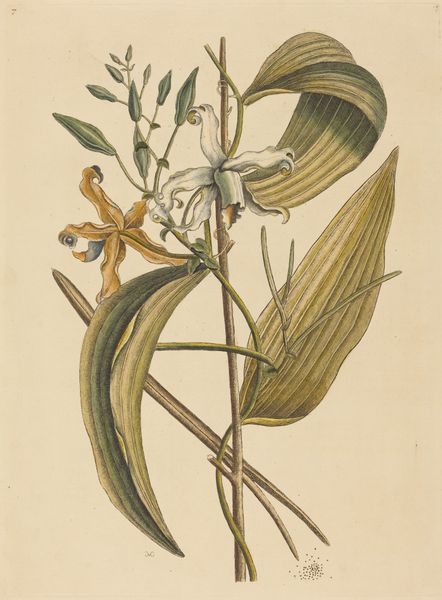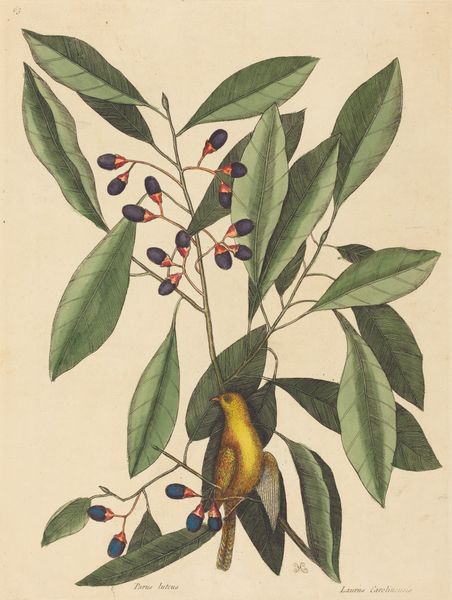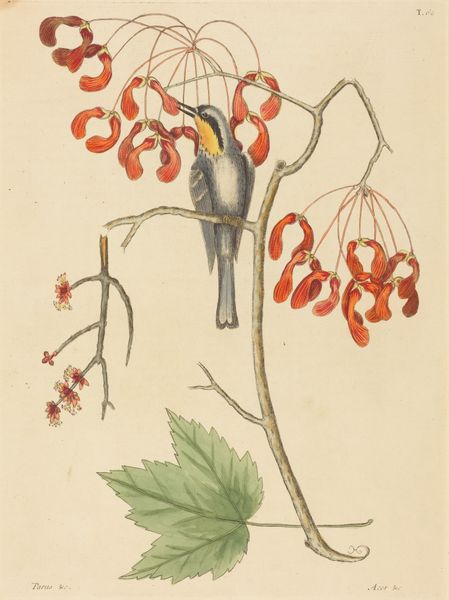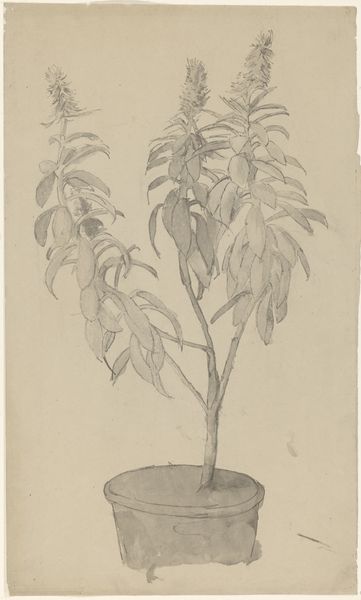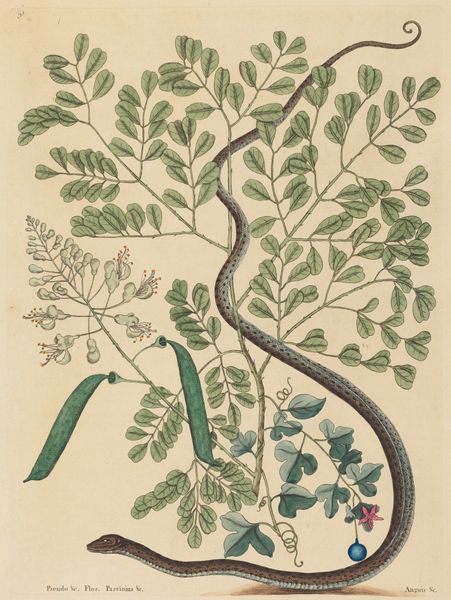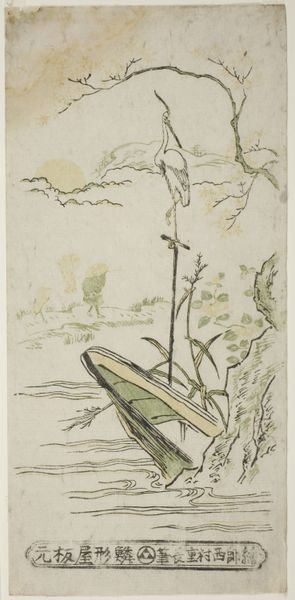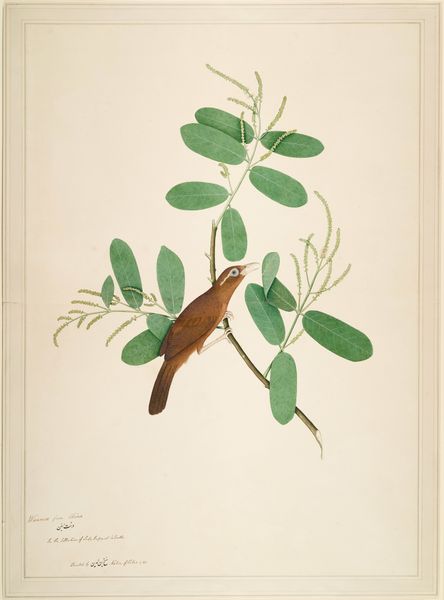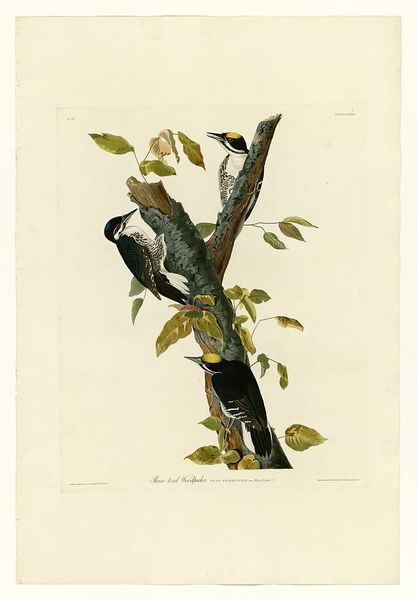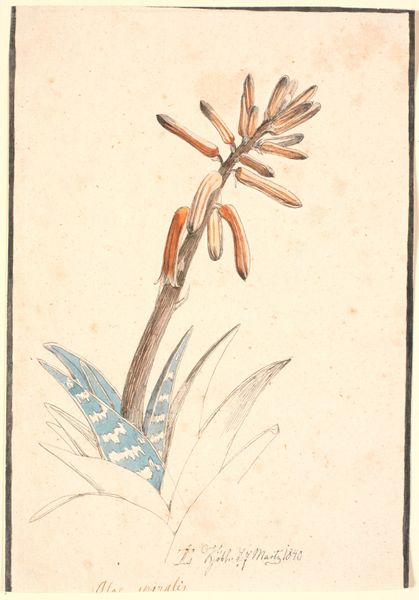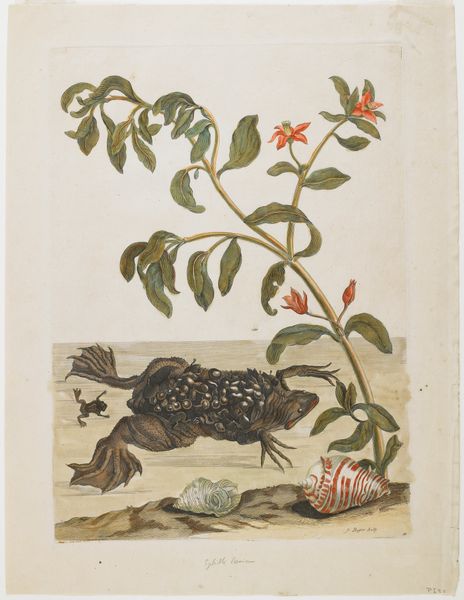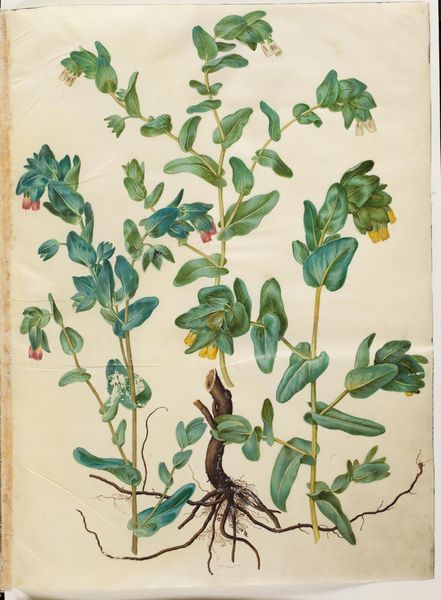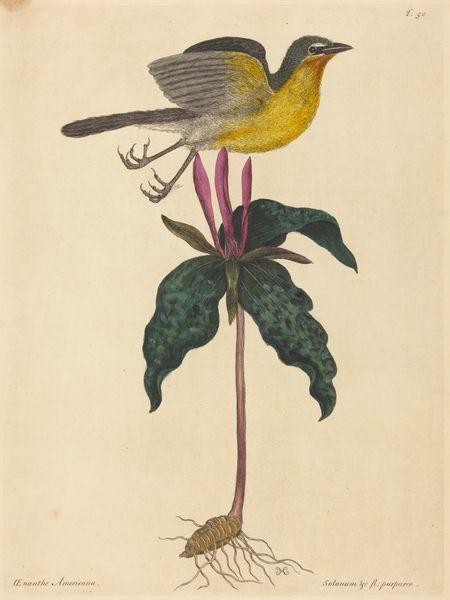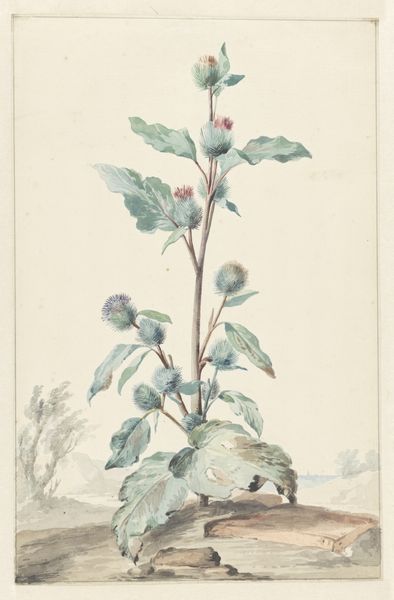
coloured-pencil, print
#
coloured-pencil
# print
#
landscape
#
coloured pencil
#
watercolor
#
realism
Dimensions: plate: 35 x 25.7 cm (13 3/4 x 10 1/8 in.) sheet: 42.1 x 29.7 cm (16 9/16 x 11 11/16 in.)
Copyright: National Gallery of Art: CC0 1.0
Curator: What strikes me first is the curious symmetry, and then asymmetry of the composition. These birds are defying gravity! Editor: Indeed. We’re looking at "The Nuthatch (Sitta Europaea)", possibly from 1754, created by Mark Catesby. It's a print using colored pencil, showing two nuthatches clinging to a tree. Curator: The print medium lends itself well to the intricate details. Note the cross-hatching of colored pencil—creating remarkable tonal variation on the tree trunk. Observe how the leaves, simplified shapes of smooth color, create a rhythmic pattern framing the central, darker mass. Editor: The image speaks to the Enlightenment’s focus on natural history, fitting within the broader scientific illustration trends of the time. Think about the role these detailed prints played; circulating information and contributing to understanding and classifying the natural world. Curator: And observe how each bird is captured mid-action. One actively grasping the bark, the other’s head perfectly in line with the curve of the tree, beak seeking. Editor: It reminds me of the social stratification of knowledge at that time. Who had access to these images, who could afford them, and how that played into colonial projects of categorizing and claiming the natural world. Curator: Yes, though perhaps its artistic achievement often takes a back seat. The contrast between light and shadow, the carefully balanced composition... it transcends mere scientific documentation. It achieves an aesthetic harmony. Look at the palette—earthy browns, greens and grays! Editor: Precisely. The formal beauty allows the documentation of wildlife to cross class barriers. To see is to know, and the image, disseminated broadly, could shape public ideas about ornithology. What do we retain today? An awareness of nature that hopefully guides more responsible interaction and ecological management. Curator: I agree. Examining this work offers new perspectives each time I return. Its artful rendering holds timeless value. Editor: Yes. I will contemplate its wider role in influencing ecological awareness through accessible visual imagery.
Comments
No comments
Be the first to comment and join the conversation on the ultimate creative platform.
